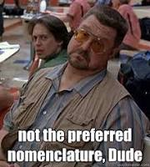Balderdash
WKR
- Joined
- Jan 5, 2022
- Messages
- 715
Tat
It might have been listed in this thread earlier, but for all posterity, I list it again: BH needs to be sealed up in order to get consistent ignition. As such, depending on the barrel diameter, shooting full bore bullets can cause some trouble. To account for this, on full bore bullets, use a properly sized loading disk between the powder and the bullet; on Sabots, air guage your barrel and use the proper size MMP sabots to seal your bore.
Similarly, if your primer comes out with a lot of ejecta on it, you're not achieving a good seal on the breech end. As stated, the o rings can be a good fix. For a couple of my rigs, I have primer pockets machined out for a CCI 209m. Designs that have an LRP in a brass case head are also a great way to seal it up, as are the Knight plastic DISC primer pockets, which also make loading and unloading a breeze.
The aforementioned measures also help keep atmospheric moisture from ruining your hunt.
Snapping off a primer before loading is always a good practice.I have had issues with first shot misfires, but I found that shooting a primer or two after cleaning solves the problem. Blackhorn does muck up the primer hole quickly and does need cleaning. I really like it as it’s easy to clean and once I figured out I had to foul the bore, it’s been reliable
It might have been listed in this thread earlier, but for all posterity, I list it again: BH needs to be sealed up in order to get consistent ignition. As such, depending on the barrel diameter, shooting full bore bullets can cause some trouble. To account for this, on full bore bullets, use a properly sized loading disk between the powder and the bullet; on Sabots, air guage your barrel and use the proper size MMP sabots to seal your bore.
Similarly, if your primer comes out with a lot of ejecta on it, you're not achieving a good seal on the breech end. As stated, the o rings can be a good fix. For a couple of my rigs, I have primer pockets machined out for a CCI 209m. Designs that have an LRP in a brass case head are also a great way to seal it up, as are the Knight plastic DISC primer pockets, which also make loading and unloading a breeze.
The aforementioned measures also help keep atmospheric moisture from ruining your hunt.
Last edited:

